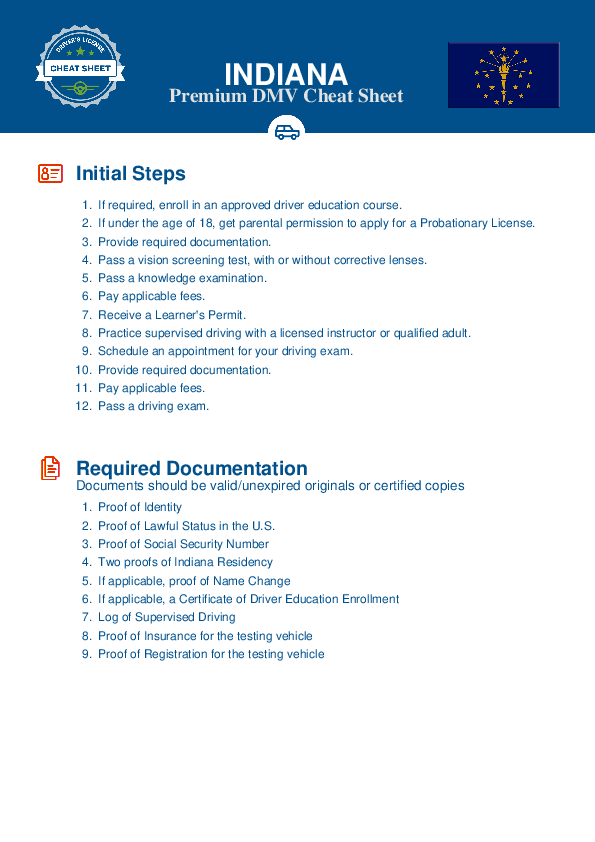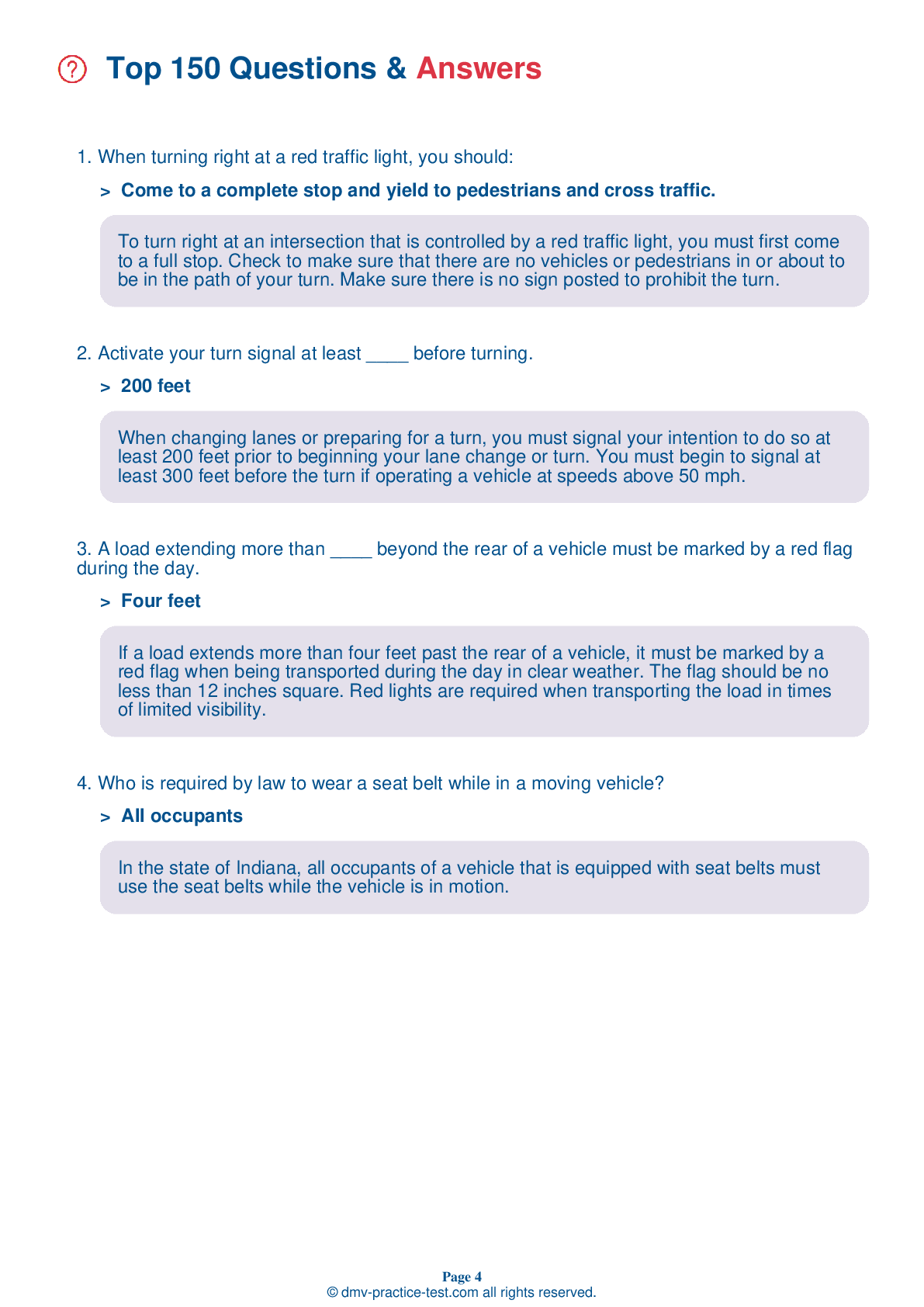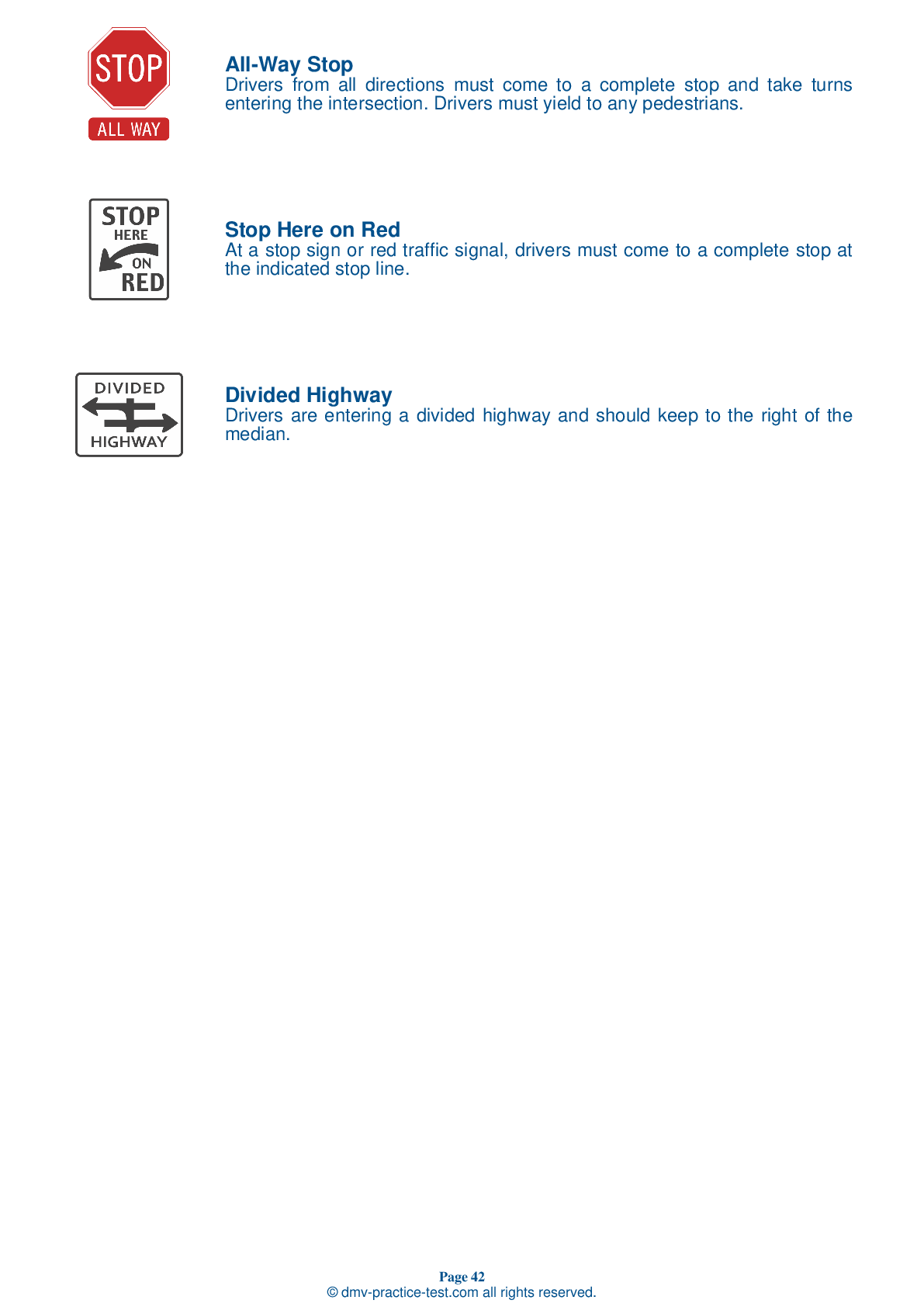FREE Indiana DMV Practice Test #12 Page 4 of 5
This set of Indiana DMV practise tests has been updated for January 2025. It includes questions based on the Indiana Driver Handbook's most significant traffic signals and laws for 2025. Use actual questions that are very similar (often identical!) to the DMV driving permit test and driver's licence exam to study for the DMV driving permit test and driver's licence exam.
On the practise exam, each question gets a tip and explanation to help you remember the concepts. The written component of the official Indiana DMV test will include questions about traffic rules, traffic signs, and driving statutes, as well as information from the Driver Handbook.
To obtain a passing grade, you must correctly answer 44 of the 50 questions. Take our DMV practise exam to help you prepare for your Indiana instruction permit or driver's licence.
The DMV exam is available in several languages.
Using any kind of testing assistance will result in an automatic fail, and the DMV may take additional action against your driver's licence, so stay away from it.
28 . What should you be most concerned about when you see this sign?
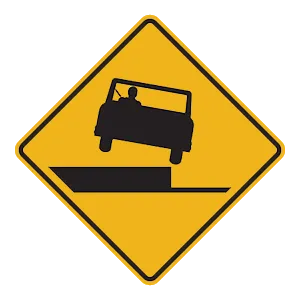
This sign indicates that the shoulder is lower than the road in the area ahead. If you drift off of the roadway and one wheel drops onto a low shoulder, do not slam on the brakes or steer sharply to try to get back onto the roadway. This could easily cause you to lose control of your vehicle.
29 . When entering a street from a driveway, you:
Always stop before entering the roadway from a driveway and yield to any approaching vehicles or crossing pedestrians. The stop should be made before crossing the sidewalk area. Failure to stop is unlawful.
30 . A speed limit is:
A speed limit is the maximum or minimum legal speed you can travel on a road under ideal conditions. You may drive more slowly than the posted speed, but it is illegal to drive any faster. You must drive more slowly where signs or signs indicate a school zone or work zone speed limit. If conditions such as road construction or bad weather make the posted speed unsafe, drive under the speed limit.
31 . This sign means:
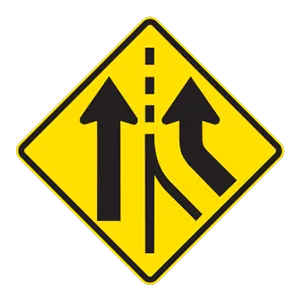
Warning signs prepare drivers for upcoming road conditions and hazards and are usually yellow with black markings. This sign alerts drivers to an upcoming added lane.
32 . Which of the following are used on some highways to direct drivers into the proper lanes for turning?
Arrows may be used to indicate which lanes should be used for specific purposes, such as driving straight or making a turn.
33 . A bicyclist who doesn’t obey traffic laws:
All bicyclists have the same rights, duties, and responsibilities as drivers of motor vehicles. Motorists and bicyclists who do not obey traffic laws can be ticketed.
34 . When approached by an emergency vehicle that is using its siren and/or flashing lights, a driver must immediately:
When you are approached by an emergency vehicle that is using its lights, sirens, and/or other warning devices, you must immediately drive to the right side of the road and stop.
35 . What is the appropriate action to take when approaching a railroad crossing that does not have signals to direct traffic?
When approaching an unmarked railroad crossing, slow down and be prepared to stop. Before you cross, be sure that no trains are approaching from either direction on any track. If you see or hear a train coming, stop at a safe distance from the nearest track and wait to proceed until after the train passes.
36 . If you are driving near a motorcycle, you must:
A motorcycle is a full-size vehicle with the same privileges as any other vehicle on the roadway. You should allow a motorcyclist a full lane width. Although it may seem as though there is enough room in the traffic lane for a larger vehicle and a motorcycle, remember that the motorcycle needs room to maneuver safely.
37 . Drivers may not pass from either side of a ____ centerline.
A double solid yellow line down the center of a two-way road means that it is prohibited for traffic from either direction to cross the center to pass.
38 . Passing is prohibited:
Locations where it is unlawful and unsafe to pass another vehicle include hills, curves, intersections, and railroad crossings.
See the exact questions that will be on the 2025 Indiana DMV exam.
99.2% of people who use the cheat sheet pass the FIRST TIME
LT gives us an insight on how the cheat sheet provided her with all the study questions she needed before taking her test.
Joe initially studied with the handbook and failed his test, he eventually found us online, studied and pass his test the first time around.
